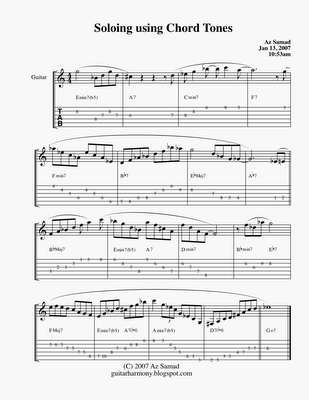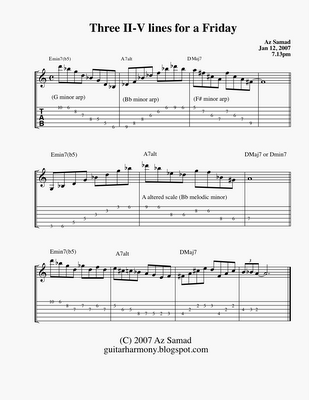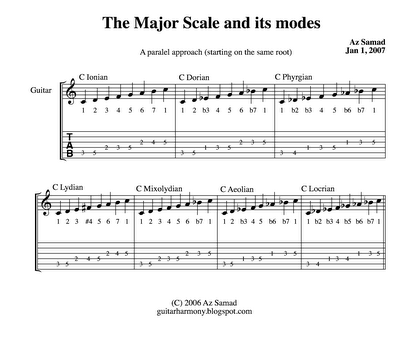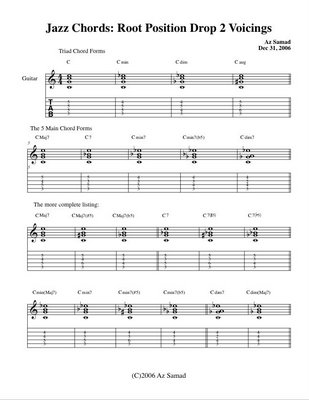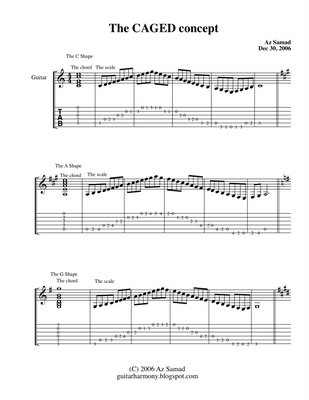Cmaj7
Improvise using only:
C Ionian Sounds:1. C Triad - C, E and G. (Arpreggio playing - variations include playing along one string, in one position, two positions or all positions)
2. C Major 7 Arpeggio - C, E, G and B
3. C Maj7 (9) Arpeggio - C, E, G, B, D
4. C Maj7 (9,13) Arpeggio - C, E, G, B, D, A
5. A minor pentatonic/ C Major Pentatonic (A,B,C,E,G) (C,D,E,G,A) - same pentatonics - different starting notes
6. C Major Scale omit 4th (C,D,E,G,A,B,C) - this is a six note scale without the possibly clashing F note. The 4th actually works great but you need to resolve it for common usage sound.
C Lydian Sounds1. D Major Triad (D, F#, A) - all the tensions of C Major7
2. B minor Triad (B, D, F#) - two tensions (9 and #11)
3. B Minor Pentatonic/D Major Pentatonic (B,D,E,F#,A) - (D,E,F#,A,B) - contains the guidetones and tensions of C Major7 (Lydian)
These are some of the most commonly used sounds over a Major 7 chord. There are many more possibilities but this is a good list to start with to experiment!
Have fun!
Best wishes and Happy New Year.
Till later, play on!



